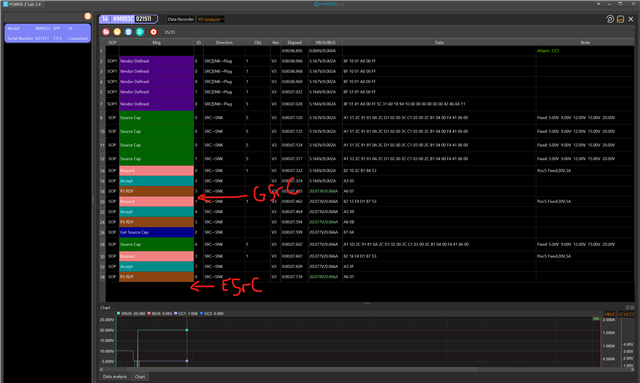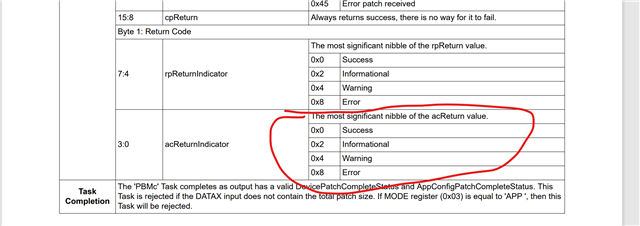Other Parts Discussed in Thread: TPD4S480
Tool/software:
I am working with a custom design, sink only, and VBUS powered, that has a TPS26750 connected to a MCU via I2Ct, I am using a TPD4S480 as a protection chip in the configuration shown in the TPS26750 data sheet for EPR implementations. I am using the NegotiateHighVoltage configuration from the pinstraps to negotiate a 20V/3A contract on power on. I do not have a EEPROM connected to the I2Cc, other posts on this forum lead me to believe I2Ct interactions should be able to make the transition to EPR pdos without an EEPROM.
On initial USB cable insertion the TPS26750 correctly negotiates the 20V Fixed contract and powers on my MCU.
I can successfully write and read all registers over the I2Ct, and I can update Transmit Sink Capacity 0x33 and Autonegotiate Sink 0x37 registers. If i modify those registers and issue a GSrC 4CC command, the device correctly renegotiates the PD contract for SPR PDOs that I have specified, but it seems to ignore the fixed EPR profile that I have in reg 0x33, which is a 28V/5A fixed profile through a USB C 140W power supply (Rocstor Y10A271-W1 also tried a dell 165W USB-C supply). when i read the received source capabilities register 0x30, the register has zero EPR PDOs in it, the bits for number of EPR pdos and the bits for the EPR PDOs are all zeros. I have tried this with multiple supplies and got the same results.
I used the same method shown in the TIDT407 to confirm the available PDOs in the supply and confirmed that 28V/5A fixed is an available PDO in both supplies and was able to watch the supplies successfully create the contract through a KM003C when i connected them to a computer that charges with those PDOs.
I've tried issuing a ESrC command after I execute GSrC but the ESrC doesn't seem to do anything. I have also tried using the USBCPD Application Customization tool to create these register values, I downloaded the .json (attached as config.txt) file and copied the register values in to my MCU code to insure the right values were being written to the registers, but didn't have any luck doing that either.
Section 6.4.10.1 of the USB PD 3.2 spec refers to "The EPR Mode capable bit Shall be set in the Fixed 5V PDO" and "The EPR Mode capable bit Shall have been set in the RDO in the last Request Message received by the Source", it appears to me that neither of those things are being done, but I don't see where to I can do those things.
Is what I'm trying to do not feasible without EEPROM or am i missing a key detail?



